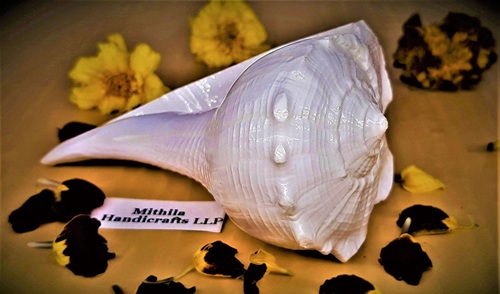The Dakshinavarti Shankh is one of the most revered and auspicious objects in Hindu tradition. Also known as Shree Shankh, it is believed to bring wealth, prosperity, and positive energy into homes and businesses. Unlike ordinary conch shells, the Dakshinavarti Shankh has a unique structure and spiritual significance, often used in Puja rituals and Vastu corrections. Because of its high demand, many fake or ordinary shankhs are sold in the market. Therefore, knowing how to identify a genuine Dakshinavarti Shankh is essential for devotees and collectors alike.

1. Understanding Dakshinavarti Shankh
- Scientifically, Dakshinavarti Shankh comes from the sea snail Turbinella pyrum.
- Unlike regular conch shells that coil to the left, this rare shell coils to the right (clockwise), which is why it is considered sacred.
- The rightward spiral symbolizes divine energy flow, attracting wealth and good fortune.
2. Shape and Structure
- The Dakshinavarti Shankh is conical with a spiral that tapers gradually.
- It has a natural hole at the top, which allows it to be held and used in rituals.
- The base is slightly wider and flat, allowing the shankh to be placed on altars.
- Its right-handed coil (Dakshinavarti) is the key identifying feature, in contrast to common left-coiling shankhs.
3. Size and Weight
- Genuine Dakshinavarti Shankhs are heavier than ordinary shells of similar size because of their natural density.
- They vary in length from 3 inches to over 10 inches, but the smaller ones are more commonly used in homes.
- The weight should feel solid and firm, not hollow or brittle.
4. Color and Texture
- Authentic Dakshinavarti Shankhs have a creamy white to light yellow hue, often with a slightly glossy finish.
- Some may have natural brown or dark streaks which indicate authenticity.
- Fake shells may appear too polished, uniformly white, or artificially colored.
5. Auditory Test
- When blown gently, a genuine Dakshinavarti Shankh produces a clear, melodious sound.
- Fake shankhs or shells made of plastic, resin, or low-quality material produce a dull or hollow sound.
6. Surface Examination
- Natural Dakshinavarti Shankhs have small ridges along the spiral and slight irregularities on the surface.
- Avoid shells that are perfectly smooth, as these are often artificially carved.
- The opening (mouth) of the shankh is slightly curved and not perfectly circular, which is another indicator of authenticity.
7. Common Confusions with Ordinary Shankhs
Many ordinary shankhs are sold as Dakshinavarti, but there are key differences:
- Spiral Direction: Ordinary shankhs coil to the left; Dakshinavarti coils to the right.
- Weight: Ordinary shankhs are lighter and feel hollow.
- Sound: Ordinary shells produce a muffled sound when blown.
- Price: Genuine Dakshinavarti Shankhs are rare and costly; extremely cheap shells are likely fake.
8. Spiritual and Ritual Use
- Placing a Dakshinavarti Shankh in the Puja room, cash counter, or main entrance is believed to attract prosperity.
- It is often cleaned and energized with rituals, such as bathing in holy water and chanting mantras.
- Keeping the shankh in the north or northeast corner of a home is considered highly auspicious.
Quick Checklist to Identify Dakshinavarti Shankh
| Feature | Genuine Dakshinavarti Shankh | Ordinary/ Fake Shell |
| Spiral Direction | Right-hand (clockwise) | Left-hand (counterclockwise) |
| Weight | Solid and heavy | Light and hollow |
| Color & Finish | Creamy white/yellow with natural streaks | Too white, polished, or artificial |
| Sound When Blown | Clear, melodious | Dull or hollow |
| Surface Texture | Natural ridges and slight irregularities | Perfectly smooth |
Final Thoughts
Identifying a genuine Dakshinavarti Shankh requires careful observation of its spiral direction, weight, color, texture, and sound. While it is a rare and precious item, buying from trusted sources and checking these characteristics ensures you bring home a spiritually authentic and beneficial shankh. This sacred shell is not just a decorative item but a symbol of prosperity, positivity, and divine blessings in Indian homes.